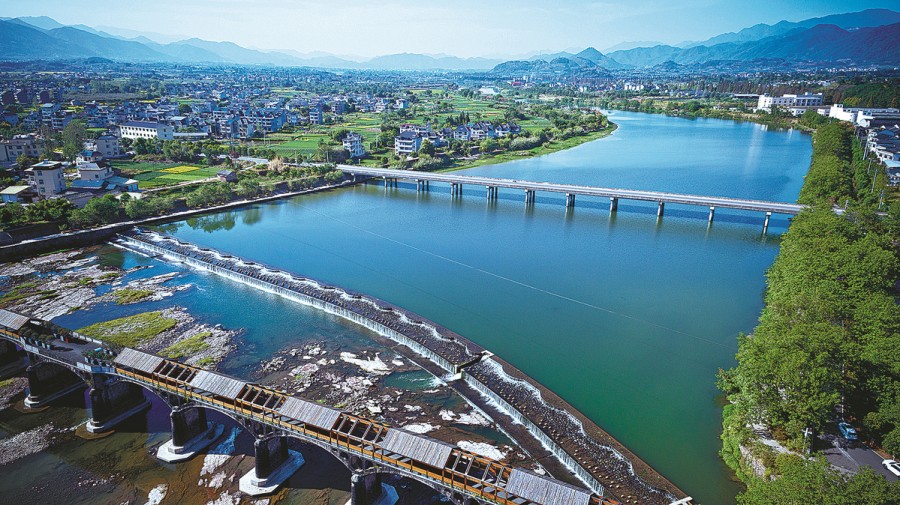Zhejiang city is now home to pair of World Heritage Irrigation Structures

The Wuyang Weir is an ancient project in the Songgu Irrigation Scheme in Lishui, Zhejiang province. [Photo/China Daily]
The Songgu Irrigation Scheme, located in the Oujiang River Basin in Songyang county, Lishui city, Zhejiang province, was included in the list of World Heritage Irrigation Structures, the International Commission on Irrigation and Drainage announced in Adelaide, Australia, on Oct 6.
According to the ICID, the Songgu Irrigation Scheme was "a remarkable irrigation scheme with impeccable engineering that has helped agriculture flourish in the region for over 2,000 years".
The scheme is a typical model of ancient irrigation engineering for small and medium-sized basins with a rich display of historical weirs, low dams, ponds and wells.
This water conservancy project maintains harmony between man and nature, supports local production, benefits residents' daily lives and prevents natural disasters such as floods and droughts, experts said.
It makes full use of natural conditions. The water can be stored for irrigation and drainage in the rainy season, and it can also be replenished by the surrounding mountains, ponds, wells and springs in the dry season, said Wang Yijia, an associate professor of water resources and electric power at Zhejiang University.
Wang added that it not only gives full play to the storage of various water sources, such as weirs, ponds and wells, but also improves the irrigation and water supply capacity to achieve the purpose of expanding the irrigation area and improving drought resistance.
In Songyang, a county with a long agricultural history, people began to divert water to irrigate fields in as early as China's Han Dynasty (206 BC-AD 220). The irrigation system was perfected during the Ming and Qing dynasties (1368-1911), and is still operating today with an irrigation area covering more than 11,000 hectares.
Also located in Lishui, Lishui Tongji Weir was recognized among the first batch of WHIS on Sept 16, 2014. The weir was built during the Southern Dynasty (420-589) and now has an irrigation area of more than 2,000 hectares.
The two remarkable projects make Lishui the only prefecture-level city in China with two sites among WHIS.
Besides the Songgu Irrigation Scheme, another three Chinese ancient and historical sites were recognized as WHIS by the ICID this month.
They were the 2,160-year-old Tongjiyan Irrigation System in Sichuan province, the Xinghua Duotian Irrigation and Drainage System in Jiangsu province, and the Chongyi Shangbao Terraces in Jiangxi province, bringing the total number of Chinese irrigation projects on the WHIS list to 30.
The ICID is an international organization, created in 1950, that works to boost scientific and technological exchanges on irrigation, drainage and flood control. It established the World Heritage Irrigation Structures designation in 2014, aiming to protect and promote irrigation projects of historical and scientific value. So far, 140 projects from 18 countries have been listed.
Fang Xiaoying contributed to this story.
























